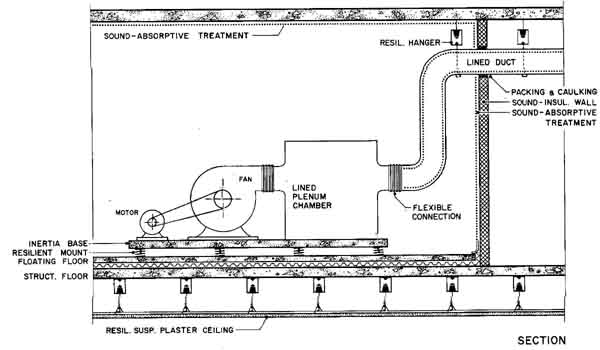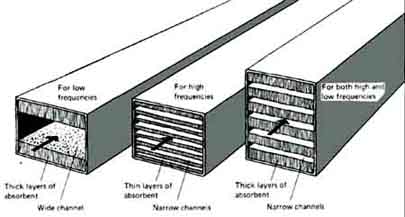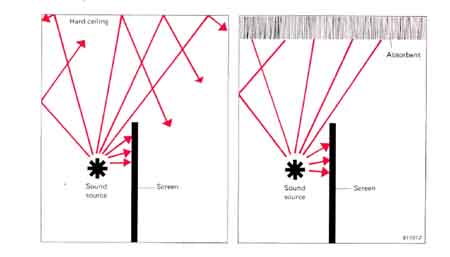Central HVAC System
When a typical Heating, Ventilation, and Air Conditioning (HVAC) system is well designed, the noises that ultimately reach living and working quarters are made up of a) low-frequency fan noise, b) mid-frequency airflow or turbulence-generated noise caused by a variety of sources within the dueled system, and c) high-frequency damper and diffuse noises.
A Acoustics isolates all sources of ducted and radiated sound, calculates the acoustical power of the fan, and determines required duct attenuation. We then analyze the results of these evaluations, and establish performance limits based on Noise Criterion (NC) ratings. Finally, we recommend solutions for insulating the building and the equipment, as well as modifying the equipment so that the remaining noise falls within acceptable noise tolerance standards.
Mechanical Room
To assist in the control of noise in both proposed and existing mechanical rooms, A Acoustics first collects and calculates all relevant data on a) the noise-generating equipment contained within the mechanical room, b) the noise isolation and absorption capabilities of the mechanical room itself, and c) the impact of noise from the mechanical room on any surrounding rooms. We then recommend modifications to mitigate the impact of the noise, taking into consideration the characteristics of the structure, local codes, equipment life cycle, available resources, and cost/benefit ratios. Following implementation of the recommendations, A Acoustics can analyze measure, evaluate, and report on the effectiveness of the modifications to ensure the desired results are achieved.


